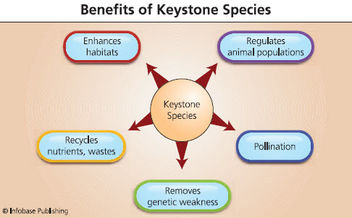 "Oh give me a home, where the buffalo roam, Where the deer and the antelope play..." The words of this western folk song written in the early 1870s became the anthem of the wild American West.
"Oh give me a home, where the buffalo roam, Where the deer and the antelope play..." The words of this western folk song written in the early 1870s became the anthem of the wild American West.
Unfortunately, bison have since disappeared from many parts of North America. It has been more than 130 years since wild bison roamed the plains of Canada's oldest National Park. But all that is about to change.
A government agency called Parks Canada that protects national parks and wildlife conservation areas in Canada, recently reintroduced sixteen wild bison into Panther Valley in Banff National Park. This herd of bison includes pregnant females, which means their numbers will be growing soon. But how did the bison numbers decline to a level that they nearly became extinct?
A Keystone Species
 Bison are extremely important because they are a keystone species -- in other words, they are highly depended upon by other animals. A decline in the population of a 'keystone species' could potentially harm an entire ecosystem, and lead to the decline of other species.
Bison are extremely important because they are a keystone species -- in other words, they are highly depended upon by other animals. A decline in the population of a 'keystone species' could potentially harm an entire ecosystem, and lead to the decline of other species.
Believe it or not, bison actually help plants grow. Seeds of plants that are transported by wind, often get stuck in the bison's fur, and fall off in different areas as the animals roam around. Bison feed on native grass species and the seeds they eat are also spread through their waste, along with nutrients into the soil.
As bison graze and move in herds, their hooves stir the soil and re-shape the land, allowing other animal species to thrive. One such animal is the prairie dog. Prairie dogs make their homes in areas where the soil has already been grazed upon by another animal. When the grass in the area is short, prairie dogs can easily spot approaching predators. Some birds are dependent on bison, such as magpies which ride on bison’s backs and eat insects from their fur.
What Caused Their Decline?
 The indiscriminate hunting of bison was a major reason for the rapid disappearance of these majestic beasts. Once Native American tribes had access to guns and horses, they killed the animals in large numbers. Farmers are to blame too. Since bison occupied a large area of land as their habitat, farmers and ranchers killed them to create grazing grounds for their cattle.
The indiscriminate hunting of bison was a major reason for the rapid disappearance of these majestic beasts. Once Native American tribes had access to guns and horses, they killed the animals in large numbers. Farmers are to blame too. Since bison occupied a large area of land as their habitat, farmers and ranchers killed them to create grazing grounds for their cattle.
The construction of railroads through the bison's habitat was another factor. The railroads divided the bison herds as the young were separated from their mothers, which made them an easier target. To add to this, sport shooters traveled west and killed many animals for fun and excitement - sometimes from the comfort of passing trains. And so, by early 20th century, there were only a few hundred bison left in North America.
Currently, thanks to conservation efforts, there are about 500,000 bison in North America. But they are not genetically similar to the species they originally belonged to. When the bison were separated from their herds, they interbred with other species of bison.
Parks Canada plans to keep the sixteen released bison under close watch, to make sure they do not face any threats and can reproduce without being in danger. By the summer of 2018, this herd of bison is expected to roam completely free, and in the wild.







